Cat Cat Village has long been renowned among visitors to Sapa for its rustic charm, vibrant cultural scene, and traditional attire worn by the Hmong ethnic people. In this article, let’s dive into everything about Cat Cat Village, from transportation and accommodation to dining and entertainment.
Where is Cat Cat Village Located?
Cat Cat Village is a small hamlet in the Muong Hoa Valley, located in the province of Lao Cai, just over 2km from the center of Sapa. Despite its small size, Cat Cat Village captivates travel enthusiasts with its lush green mountains, terraced rice fields, and the simple beauty of wooden houses. It provides visitors with a sense of simplicity in contrast to the hustle and bustle of urban life.
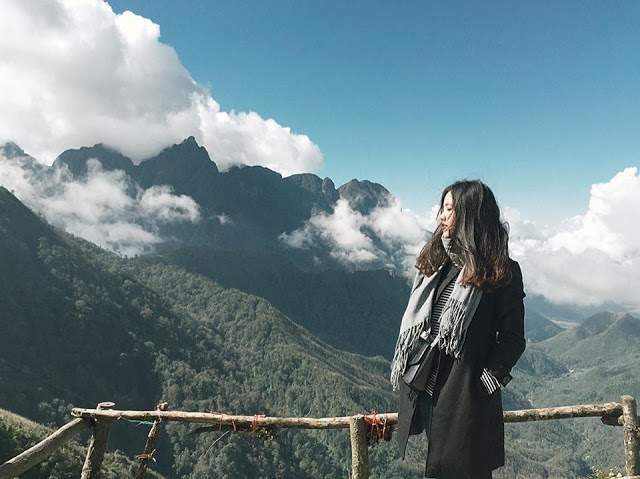
Sapa mountain nature
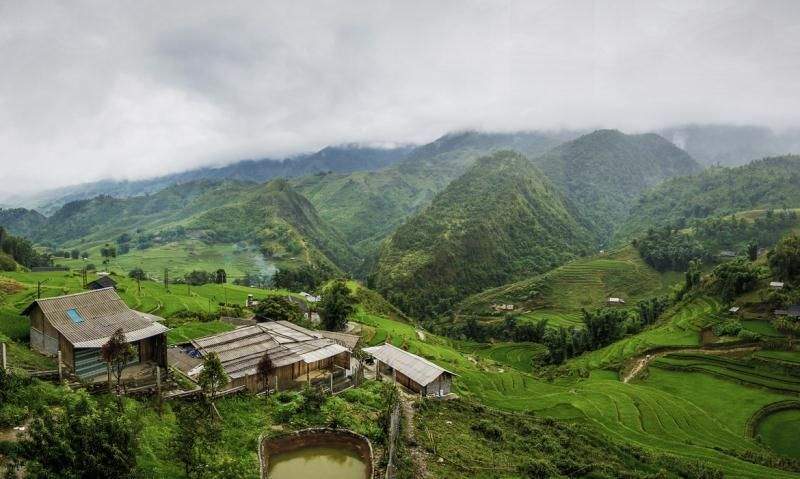
Cat Cat Village Sapa
Best Time to Visit Cat Cat Village
Cat Cat Village, situated in the high mountains of the Northwest, enjoys a cool climate throughout the year, with each season showcasing unique highlights. Spring brings cherry blossoms and plum blossoms; summer features vibrant yellow mustard flowers; autumn displays ripe golden rice fields. And winter blankets the landscape in white snow. For those who have never seen snow, December in Sapa is an ideal time to witness cherry blossoms blooming amid the white snow and immerse yourself in the highland festival.
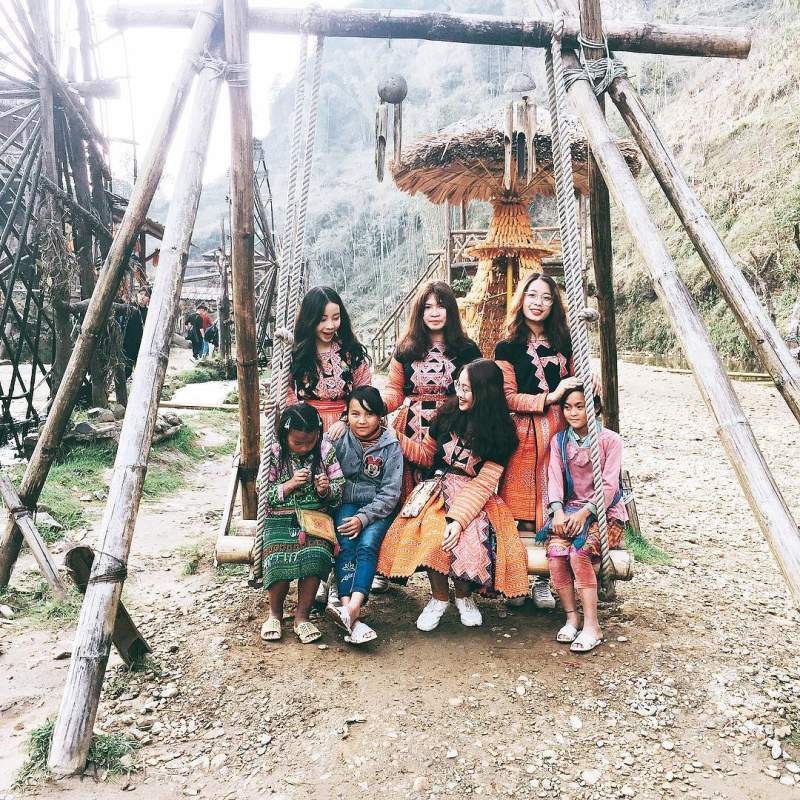
Colorful national costumes
What to Do in Cat Cat Village?
Upon reaching Cat Cat Village, numerous experiences are awaiting you. First and foremost, upon arrival, visitors can purchase tickets at the entrance for exploration. Tickets for adults are 90,000 VND per person, and for children, they are 50,000 VND per person.
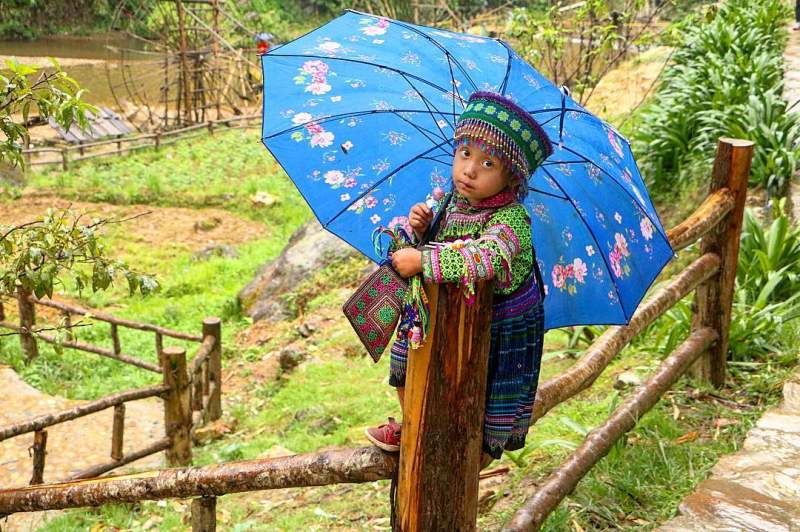
Sapa ethnic baby
As you begin your tour, walking is the primary mode of transportation, and motorbike entry is limited to avoid disturbing sightseeing. One of the must-try experiences is renting traditional ethnic costumes to transform into H’mong boys and girls, wearing unique outfits adorned with intricate hairpins. Next is purchasing handmade handicrafts created by the skillful hands of residents as exquisite gifts. Here, items such as earrings, bags, and clothing look exceptionally distinctive and eye-catching, thanks to the indigenous patterns and motifs embroidered on the products, reflecting both artistic and cultural aspects of the highland ethnic groups.
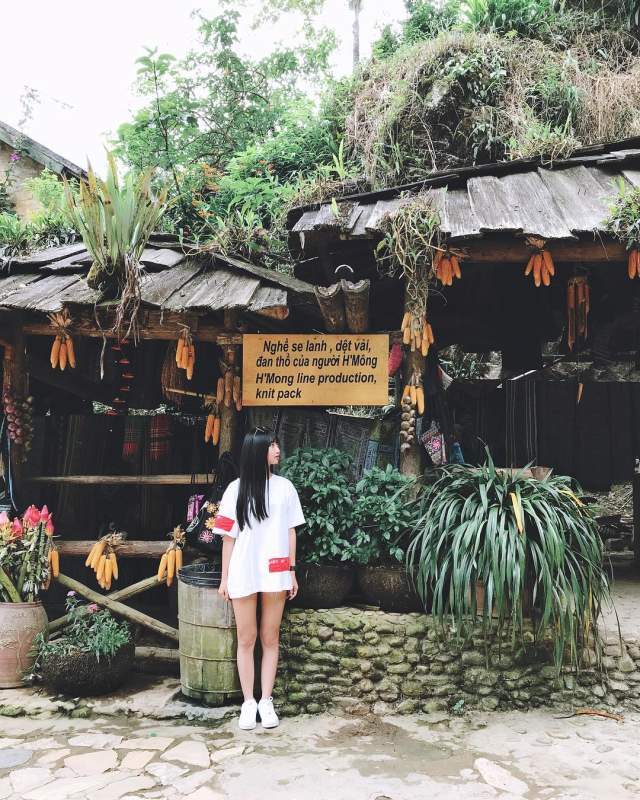
Handicraft village in Cat Cat village
Moreover, you can also sample local specialties that are famous in the region, such as fireplace-cooked buffalo meat, corn wine, apple cat wine, horse meat hotpot, etc. These delicacies offer a delightful taste of the local culinary scene. Additionally, you can visit a traditional house to learn about the kitchen and daily life of the local people and take Instagram-worthy photos at the Bac Bridge spanning the Cat Cat Waterfall. Despite being a small village, Cat Cat has a lot to offer for you to explore.
If you have more time, you can also visit other attractions in Cat Cat Village, such as the Water Mill Wheels, Cat Cat Waterfall, terraced fields, Hoa Stream, etc., to capture picturesque check-in photos and gain a deeper understanding of the daily life of the local people.
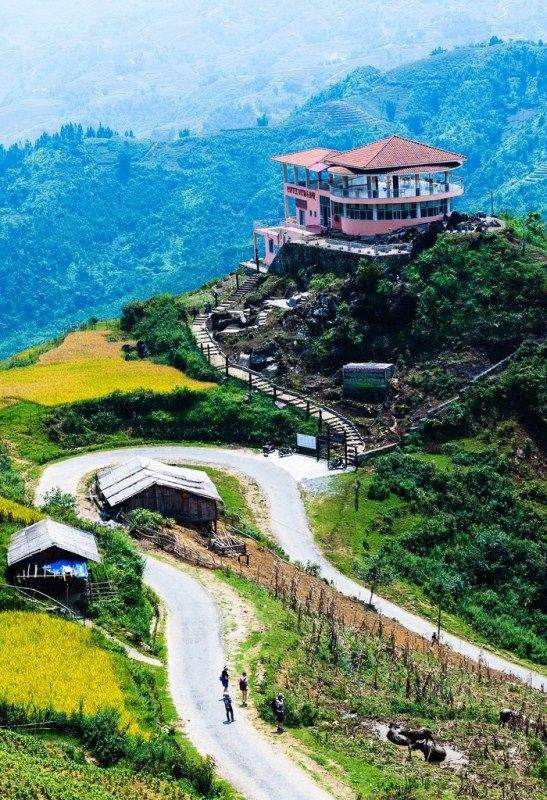
The winding road leads to Cat Cat Village.
Directions to Cat Cat Village
From the center of Sapa, there are various ways and means to reach Cat Cat Village:
1. Trekking
For those who enjoy embracing nature and want a more detailed insight into the daily life of locals, trekking is an excellent option. Trekking enhances physical fitness and provides an authentic experience, making your journey more memorable and accessible. The distance from Sapa to Cat Cat Village is approximately 2km, making it an accessible trek for those who enjoy walking.
If you love the beauty of Sapa and want to explore more, you can also consider trekking to Ky Quan San – the Cloud Paradise of Sapa and Bach Moc Luong Tu – one of the four highest mountains in Vietnam.
2. Motorbike Rental
For those seeking more convenient transportation, renting a motorbike is a viable option to travel from Sapa to Cat Cat Village. The road is relatively smooth, and the distance is short so that you can enjoy the ride with caution at a moderate speed—Motorbike rental prices in Sapa range from 100,000 to 240,000 VND per day.
3. Bicycle Rental
Apart from trekking and motorbike rental, you can also experience bicycle rental services to reach Cat Cat Village. Typically, hotels in the Sapa tourist town offer bicycle rental services, and all you need to do is ask the front desk staff, rent a bike, and hit the road. Bicycle rental prices in Sapa range from 120,000 to 150,000 VND per day. This is also a unique way to add a fresh experience to your Cat Cat Village trip. If you have the opportunity, invite your friends to try cycling together!
Additionally, if you are traveling with a large family comprising elderly members and children, you can choose to hire a taxi for more convenience and ease of movement.
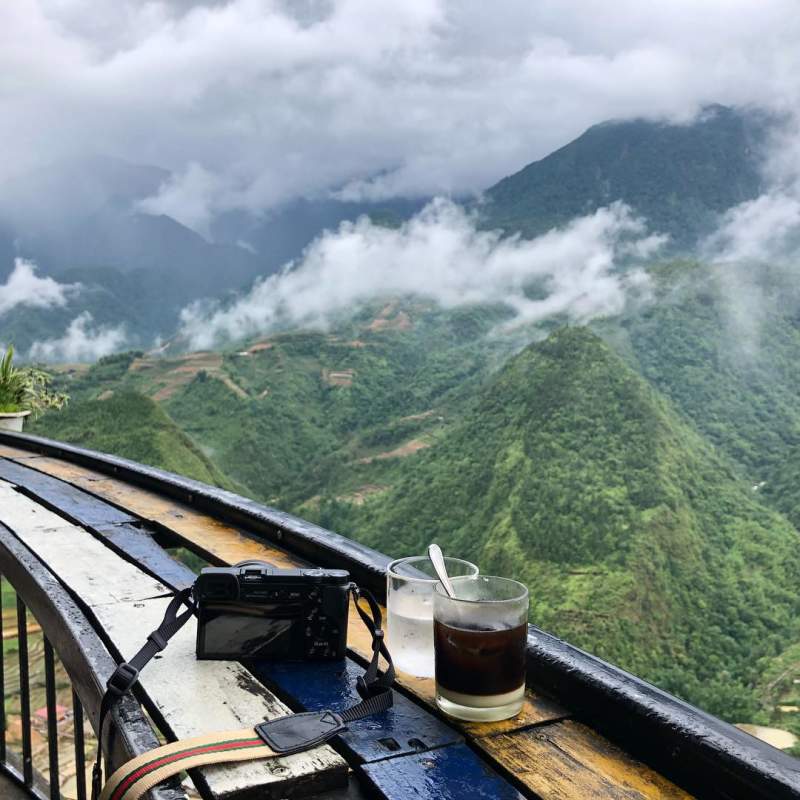
The cafe at the entrance to Cat Cat village
On this road, you will pass through the most beautiful Sapa cafe in town. This road is quite steep and higher than Cat Cat, so you can see the entire Village from above, with the houses lined closely.
A Unique Cultural Tapestry
Stone path stairs
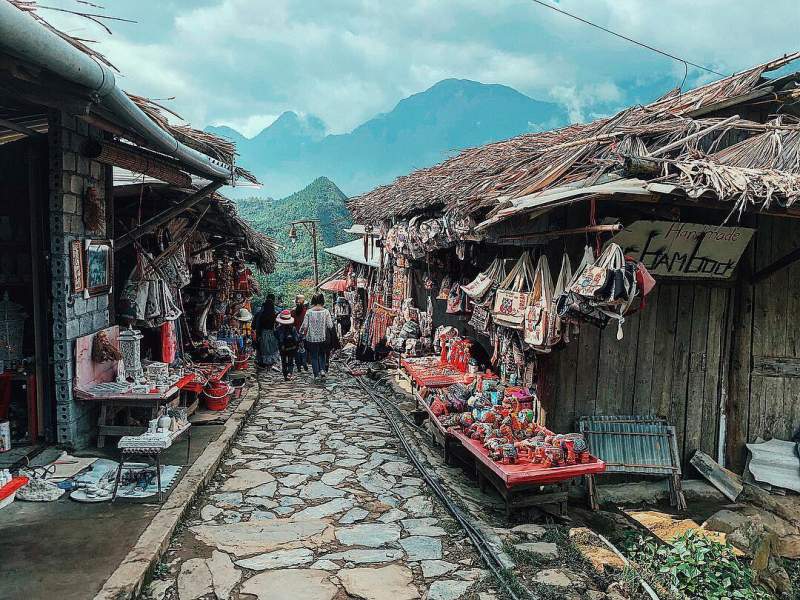
Images of paved roads leading to the Village
Stepping through the gate leading to Cat Cat’s entrance, you will be surprised by the wide staircase of only two rows of people paved with glossy stones. The relatively steep path between the two blocks creates a beautiful scenery.
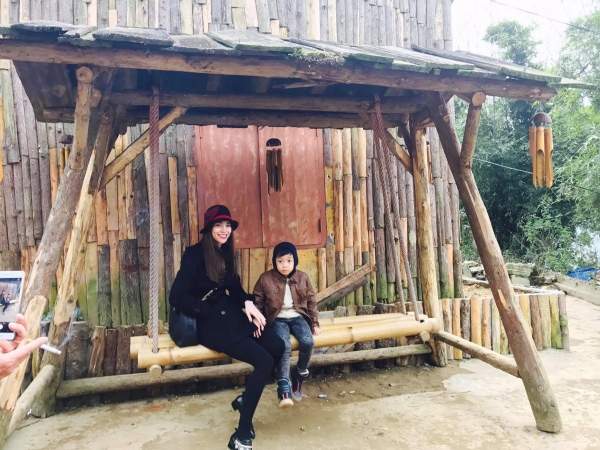
Singer Ho Ngoc Ha also chose Cat Cat Village for her tour of Sapa.
Along the two sides of the road are stalls with all kinds of crafts such as ethnic jewelry, brocade, specialties Sapa, … that visitors cannot resist but stop for a few moments, buy a few gifts for themselves and their loved ones as gifts.
Rustic ethnic houses
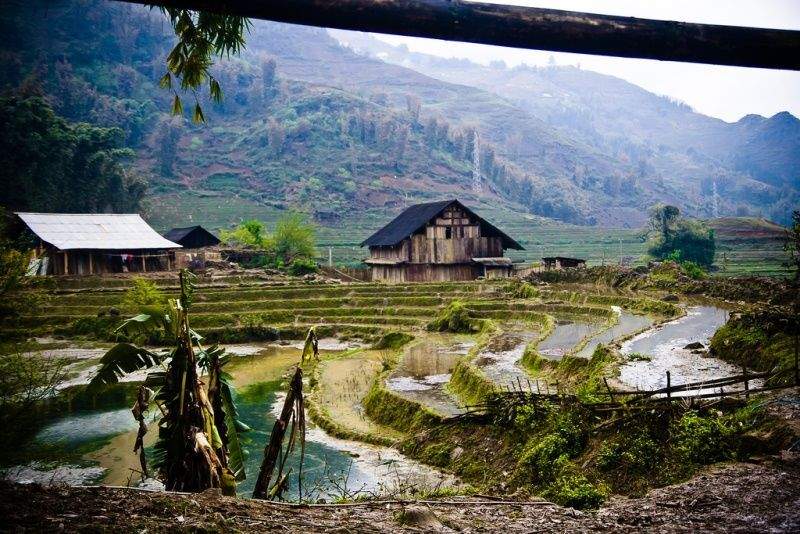
Photos of simple houses mixed with terraced fields
These houses were formed in the years of the 19th century Cat Cat village of the Hmong people. Hmong families live in the middle of the mountain, next to the hillsides of livestock farming.
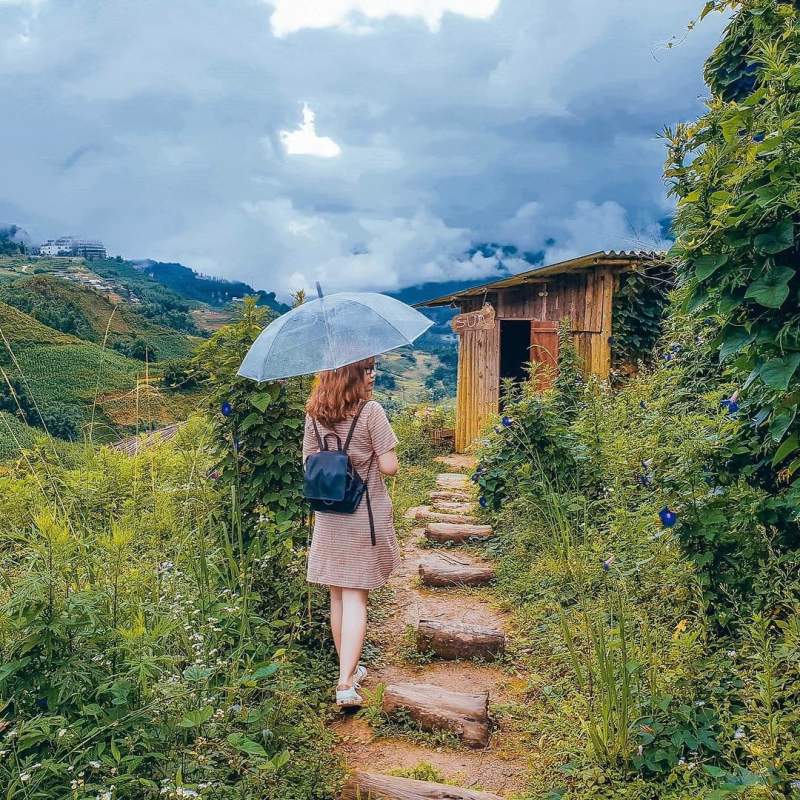
Virtual life frames for girls
The three-story houses, also known as the “wall house,” are made of wood. Perhaps Village comes across it in Vietnamese films set in the Northwest. The house’s interior space is straightforward, and the kitchen is right next to the reception area, the dining room, and only two extra sleeping spaces.
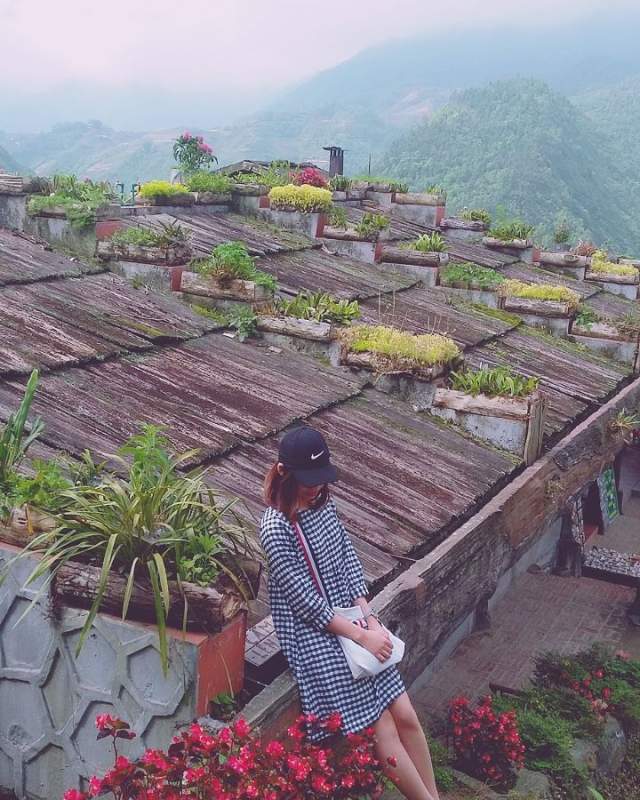
The uniqueness of the wooden houses
You will see these houses on the stone steps most clearly. Although small, it is charming with a few pots of flowers, pots placed on the roof, and sometimes a wooden swing in the door for children to play.
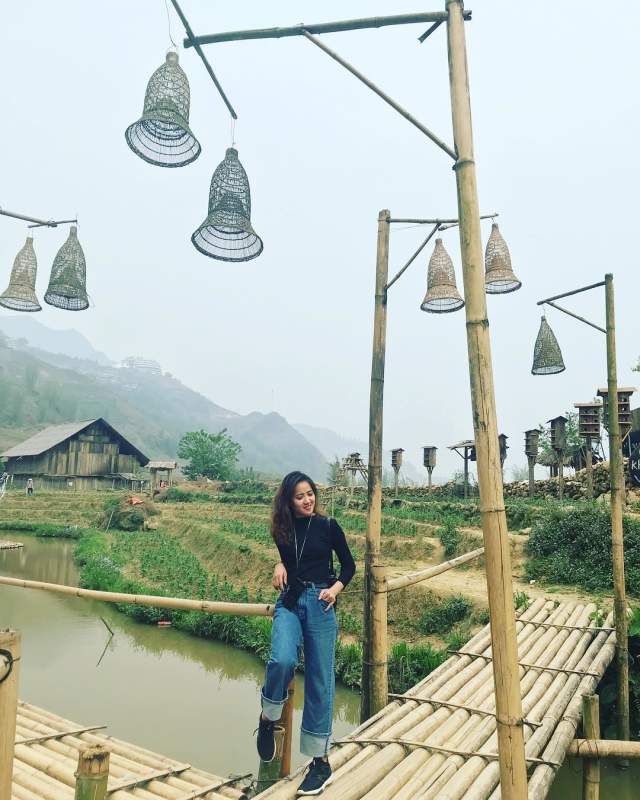
One of the prominent check-in locations in Cat Cat village
Cat Cat Village Center
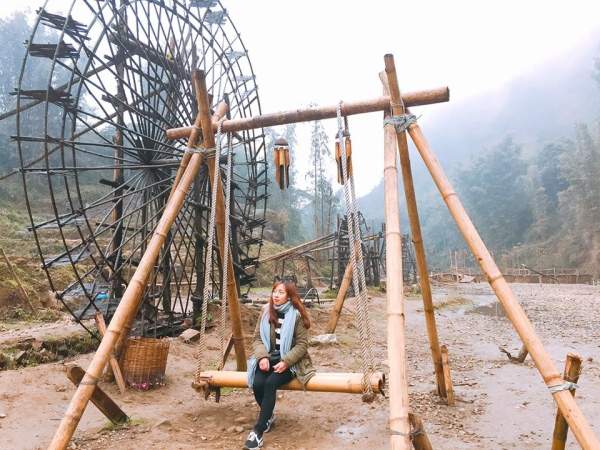
Giant water mills in Cat Cat
It can be said that the center of the Village is the most prominent stop in the journey to discover Cat Cat Village. Crossing the paved vertical slope, a beautiful scene will open up before your eyes, but pay close attention because the road is quite slippery.
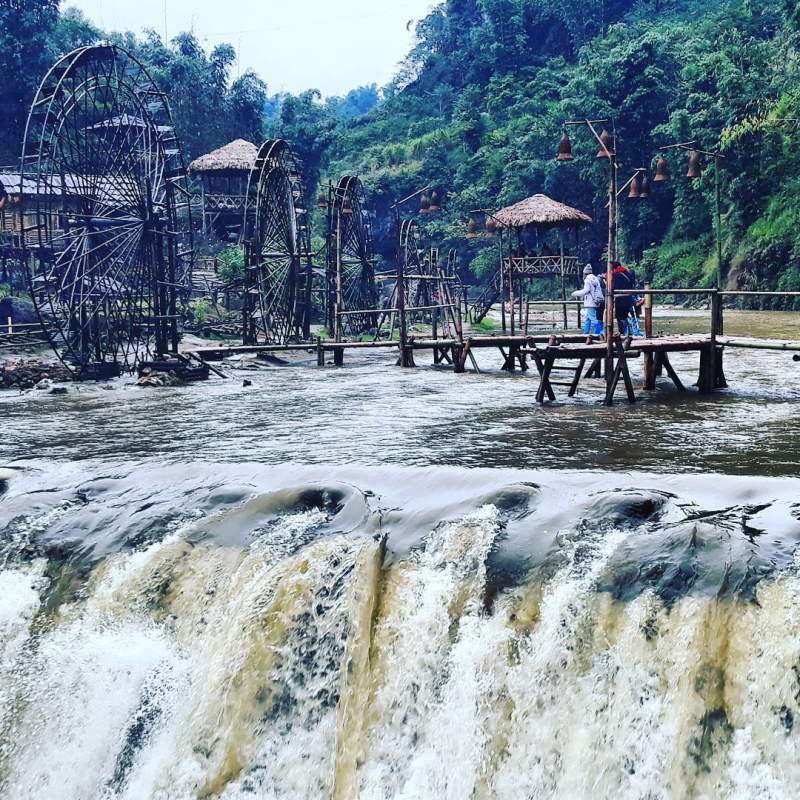
A beautiful stream of dreaming flowers
A whole stream of white, fast-flowing water with murmuring sounds. There are quite a few interesting things here for you to explore. The giant water mill, the bamboo bridge protruding on the cascade, the wooden merry-go-round, the thatched cottages … make you not miss to leave.

Silver waterfall
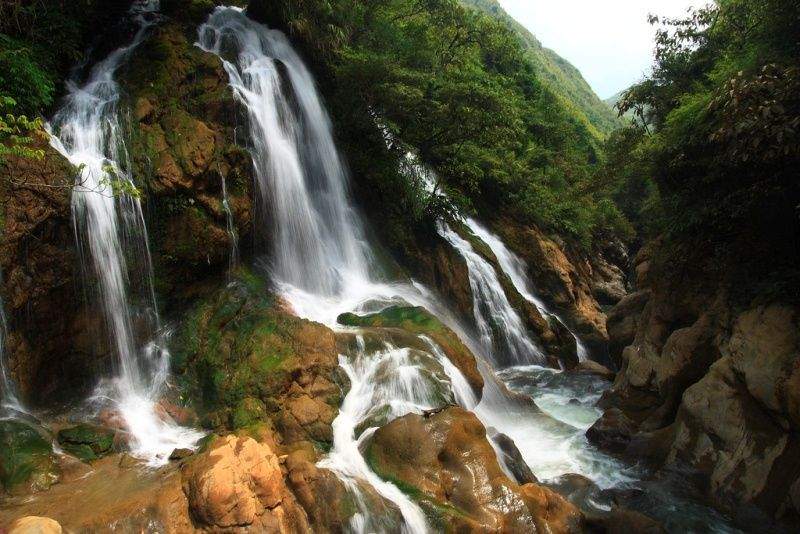
The dreamy beauty of Silver waterfall
Walk a few more steps, and you will encounter a standing waterfall, fast-flowing white water straight from above. The French found and named this Silver waterfall as Cat Cat waterfall.
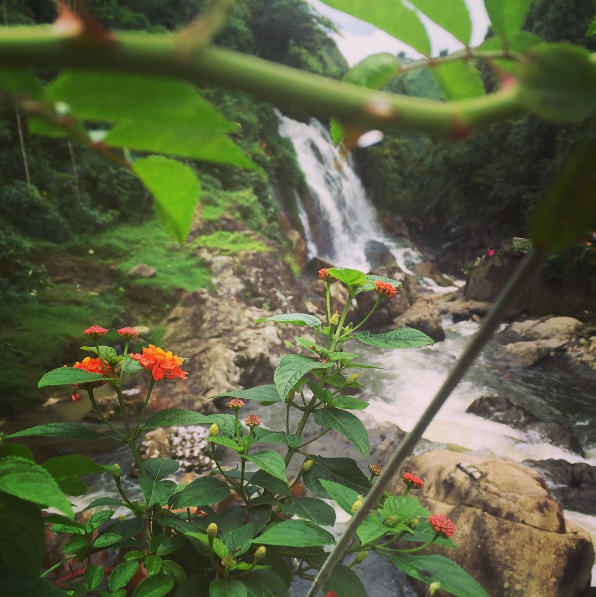
Wild grass nature beside the Silver waterfall
Amid vast wild mountains, listening to the sound of water flowing through the cliffs, … a peaceful sky makes your soul feel so light.

Beautiful Gem Valley landscape
Reward yourself with comfortable moments of rest after work, giving yourself a tour of Sapa to immerse yourself in the mountains. Also, do not forget to visit Cat Cat Sapa village to explore the traditional culture of the Mong people.
What’s Fun in Cat Cat Village? Travel Suggestions for Cat Cat Sapa
Known as the most beautiful ancient Village in Northwest Vietnam, Cat Cat Village is undoubtedly full of enjoyable activities and picturesque spots. Let’s explore what makes Cat Cat Village exciting with Klook!
1. Explore the H’Mong Ethnic Village:
Start your journey at the Cat Cat Tourism Area at the village entrance, where traditional handwoven brocade and crafts such as linen cultivation, weaving, embroidery, and blacksmithing are preserved. Cat Cat Village is also known for its silver jewelry craftsmanship, passed down through generations of the H’Mong people. As you venture deeper into the Village, the natural beauty unfolds with terraced fields, meandering streams, waterfalls, and enormous water wheels.
2. Stroll Along the Stone-Paved Path Through the Village:
After passing through the village gate, follow a stone-paved path leading into the Village. This is a familiar check-in spot for photo enthusiasts whenever they visit Sapa. Along the sides of the road are small souvenir stalls offering indigenous items and services to rent H’Mong traditional costumes and accessories for photoshoots. Immerse yourself in the unique beauty of the Northwest region by transforming into a H’Mong girl or boy against the backdrop of Cat Cat Village.
3. Row a Boat on the Stream:
Upon reaching the central area of the Cat Cat Tourism Area, there are various fascinating activities, and one not to be missed is rowing a boat on the Stream. You’ll feel delighted as you gently row along the Stream with a small boat made of connected bamboo tubes. If you’re not into rowing, you can sit by the Stream in traditional H’Mong attire and capture stunning photos. It’s a fantastic experience!
4. Enjoy Shopping for Unique Items:
Throughout your trekking journey in Cat Cat Village, avid shoppers can “collect” numerous unique souvenirs at friendly prices. From silver jewelry, traditional fabric clothing, and wooden toys to local specialties, there’s a wide array of items to explore. Don’t hesitate to haggle for a better deal!
5. Visit New Attractions in the Cat Cat Tourism Area:
Once you’ve explored the familiar spots mentioned above, you can visit some newly built tourist attractions, including:
– The giant bird’s nest area: is located at the center of the tourism area, offering panoramic views of the majestic Hoang Lien Son mountain range.
– The daisy garden: adjacent to the bird’s nest, the daisy garden is most vibrant and colorful in August, providing a bright background for photos.
– The pink silk cotton tree: in the middle of the daisy garden, a small garden with a distinctive khèn (traditional instrument) and gùi (backpack) model, serving as a charming and romantic photo spot.
– The woven fabric hammock: woven from available village fabrics, hung between two wooden pillars, creating a cute and romantic check-in point.
– The rose garden: featuring a model of the khèn and gùi, familiar objects of the H’Mong people, standing out in the middle of the garden.
– The wooden house: an ideal background with the sky, clouds, and the distant Hoang Lien Son mountain range.
What to Eat in Cat Cat Village?
Around the Cat Cat Tourism Area, there are several eateries where you can indulge in various local delights, such as corn wine, apple wine, “thắng cố” horse meat, and buffalo meat from the kitchen. If you have the chance to visit H’Mong households, you’ll undoubtedly discover even more culinary delights.
Tips for Visiting Cat Cat Village
- Before you go, choose appropriate clothing for the weather to avoid discomfort in cold or hot weather.
- Limit littering in public places to protect the environment, natural landscapes, and residents’ living spaces.
- Plan (such as angles for photos, lighting, etc.) to capture beautiful Instagram-worthy pictures.
- Choose comfortable shoes, sneakers, or sports shoes for easy movement, as the roads in Cat Cat Village may not be flat, and there could be slippery areas near waterfalls.
- Bring drinks, sunscreen, sunglasses, and long-sleeved clothes to avoid the midday sun in the high mountains.
Cat Cat Village is a must-visit destination in Sapa, providing an opportunity to gain a clearer insight into the lifestyle and culture of the Hmong ethnic people amidst the breathtaking landscapes of endless forests and terraced fields.
